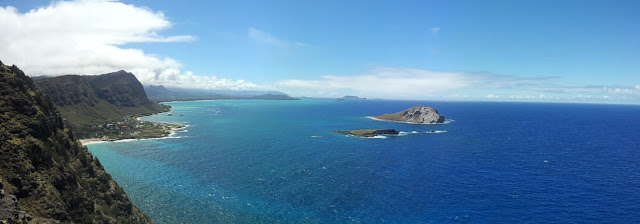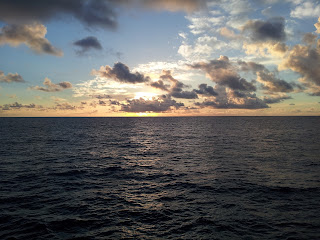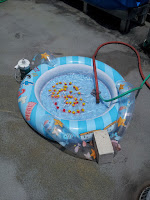So citing fellow course participant Michael Henson's Facebook post, "it feels surreal" that the course is over and a very awkward feeling saying goodbye to all these great people that I basically have spent every single day with for the past five weeks. Needless to say, it was a great bunch of people, students and faculty alike. I'm sure I will see most of them again sometime and there might even be opportunities for collaboration. To cite David Karl (the C-MORE director); "science is greater than any one individual", the new generation of scientists (including me) goes down a path of sharing knowledge to further our research to the benefit of all. That's exactly what Dave recognises and perhaps this is one of the contributing factors to why humanity has never seen a greater rate of progress in all fields and aspects. 30 years ago most methodologies and technologies (perhaps even including theories to some extent) never saw much change. Today, in 2015, and with the increasing development of the newly implemented metagenomic tools, we are looking at ever improving methods and new discoveries almost on a yearly basis. It is a staggering development which we all should be proud of and which I'm privileged to be part of.
Now I'm starting to sound like Dave, haha!
I contributed with a small, but oh so important, story (which I of course told the audience) of nitrogen fixation at station ALOHA. Using metagenomics I wanted to address a few different questions on the subject; What organisms fix nitrogen at station ALOHA? At what depth do they do that? And finally, in what size fraction is most of the nitrogen fixation occurring? After successfully answering my questions I also used chemical and physical data profiles, plotted for comparison, to attempt to answer why I got these results.
In short (which was my conclusion slide during my part of the presentation) I found that the unicellular cyanobacteria and obligate symbiont, UCYN-A, was dominating nitrogen fixation at this time of year at station ALOHA. I also found that the relative abundance of genes for nitrogen fixation (nif-H, which I assumed to be a proxy for actual nitrogen fixation) was highest at the surface and decreased with depth.

 The evening was spent at Waikiki Aquarium by the beach which was a farewell gala for us summer course students. All of C-MORE (and more) were invited and I had a great evening mingling with all the faculty a final time as well as hanging out with the rest of the students. Thanks Dave for the talk, the introductions to the rest of the renowned people attending and all the praise (weather it is actually true or not, you're a true inspiration).
The evening was spent at Waikiki Aquarium by the beach which was a farewell gala for us summer course students. All of C-MORE (and more) were invited and I had a great evening mingling with all the faculty a final time as well as hanging out with the rest of the students. Thanks Dave for the talk, the introductions to the rest of the renowned people attending and all the praise (weather it is actually true or not, you're a true inspiration).I must say that it was a rather emotional evening which Mike set the bar for when he showed a self-made video compilation summing up the course (awesome job, Mike).
So at the end of our time at the Aquarium there were plenty of speeches of praise (specially by Dave), hugging and also a bit of crying. I wish the evening hadn't passed so quickly, but at least I had great concluding talks with everyone involved in the course.
Fittingly enough it just so happened that this very day was a regular day of fireworks at Waikiki. It really felt like it was just for us.
I'll see you soon again all the awesome people of C-MORE summer course 2015!


































